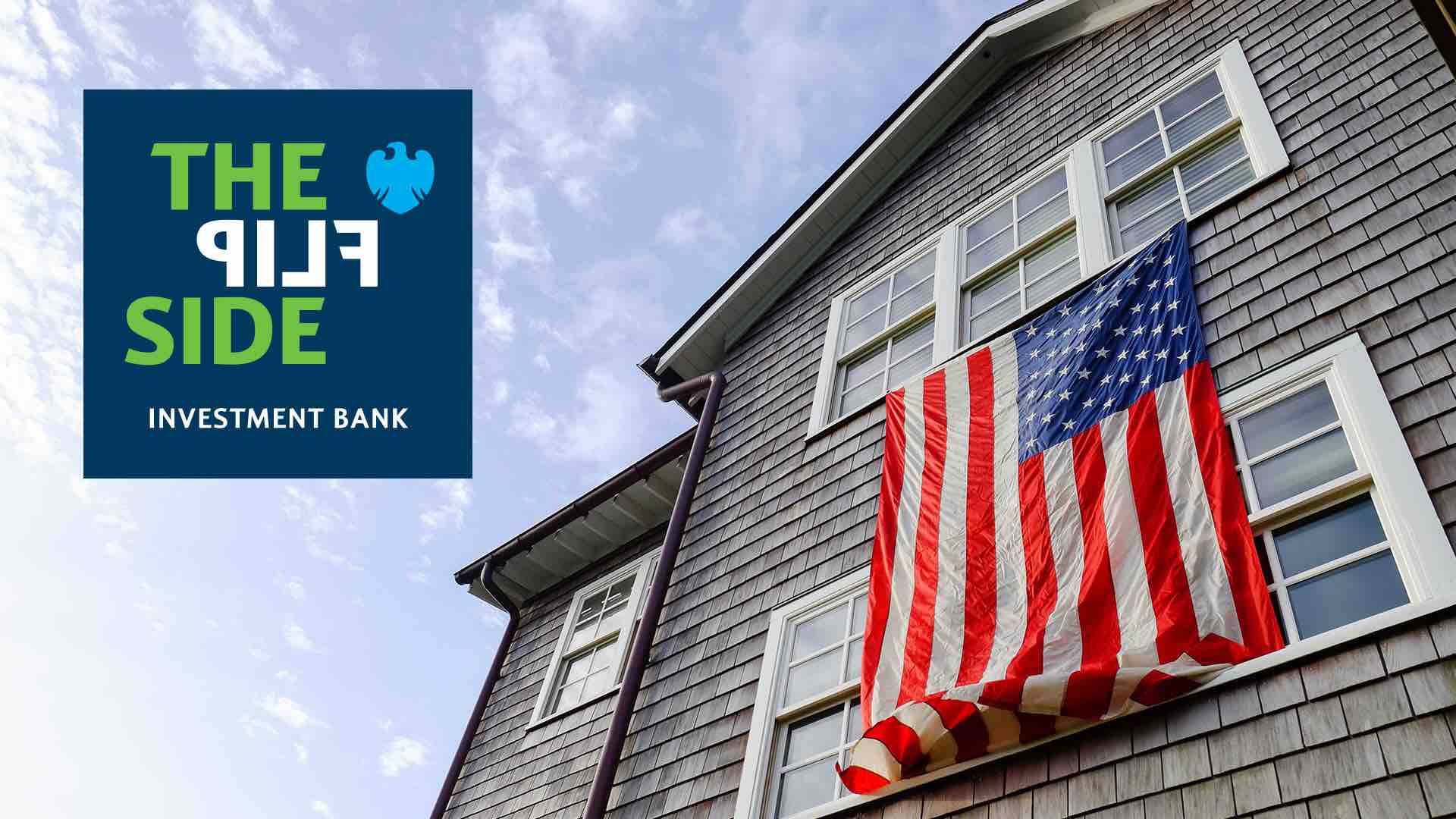| | | | | | | Presented By Barclays Investment Bank | | | | Axios Markets | | By Dion Rabouin ·Oct 19, 2020 | | Good morning! Was this email forwarded to you? Sign up here. (Today's Smart Brevity count: 1,269 words, 4½ minutes.) 🎙 "It felt like the world was ending. It was almost like being caught in an earthquake where you're half in shock." — See who said it and why it matters at the bottom. | | | | | | 1 big thing: The Fed may be starting to question the Fed put |  | | | Illustration: Aïda Amer/Axios | | | | Several officials at the Fed are beginning to worry about asset bubbles and excessive risk-taking as a result of their extraordinary policy interventions, James Politi writes for the Financial Times, citing interviews with multiple Fed presidents and members of the Board of Governors. - Some are now pushing for "tougher financial regulation" as concerns grow that monetary policy is "encouraging behavior detrimental to economic recovery and creating pressure for additional bailouts."
What they're saying: "I don't know what the best policy solution is, but I know we can't just keep doing what we've been doing," Minneapolis Fed president Neel Kashkari told the FT. - "As soon as there's a risk that hits, everybody flees and the Federal Reserve has to step in and bail out that market, and that's crazy. And we need to take a hard look at that."
Boston Fed president Eric Rosengren called for a "rethink" of "financial stability" issues in the U.S., and Fed governor Lael Brainard said in a speech last month that expectations of extended low-interest rates were boosting "imbalances" in the U.S. financial system, Politi reported. Why it matters: Economists, strategists and fund managers on Wall Street have said for months that the Fed has effectively killed price discovery by "nationalizing" the bond market with its actions and is artificially holding up the price of financial assets. - That has elevated U.S. economic inequality, and while market participants have cheered, the Fed's popularity has sunk among most Americans.
- Much of the U.S. economy, including jobs and spending at small businesses and firms not dedicated to e-commerce, continues to be weak.
The big picture: The latest comments from Brainard, Rosengren, Kashkari and others suggest that influential members of the Fed's policy-setting committee may be pushing back against the so-called Fed put — a belief among investors that if stock prices fall enough, the Fed will bail them out by lowering interest rates or by pushing trillions of dollars in liquidity into financial markets through quantitative easing. - That has been the underlying principle of bullish stock market strategies over the past decade, including BTFD (Buy The F*cking Dip) and TINA (There Is No Alternative), that have emboldened traders to continue buying U.S. stocks despite grim economic conditions.
But, but, but: The tough talk may simply be a call for someone else to step up as the Fed continues to backstop markets. - "For me, monetary policy is a very poor tool to address financial stability risks," Kashkari told FT.
- And Rosengren added that the central bank lacks the tools to "stop firms and households" from taking on "excessive leverage."
|     | | | | | | 2. Catch up quick | | China's economy grew by 4.9% in the third quarter year over year, missing expectations but accelerating from 3.2% growth in Q2. (SCMP) Tech companies are on pace to end the year accounting for nearly 40% of the S&P 500, their greatest share of the index ever, topping the previous dot-com era peak. (WSJ) Citigroup, JPMorgan Chase and Bank of America warned staff their bonuses will not keep pace with the record revenues the banks booked the last two quarters, potentially creating a record gap between payouts and profits. (FT) The U.K.'s deputy chief medical officer said it is not unrealistic that a coronavirus vaccine could be deployed soon after Christmas. (The Times) WeWork, China's Luckin Coffee, Germany's Wirecard AG and a number of other companies that combined cost shareholders roughly $30 billion after various implosions had one thing in common: They were all audited by Ernst & Young. (WSJ) |     | | | | | | 3. Report shows manufacturing tea kettle |  Data: FRED; Chart: Axios Visuals Manufacturing PMIs have surged over the past few months, showing a clear breakout V-shaped recovery that has put the indexes of sentiment at the highest levels since 2018, but the hard numbers continue to lag. Driving the news: The Fed's index of industrial production, which tracks output at factories, mines and utilities, fell a seasonally adjusted 0.6% last month after consistent increases since May, and output remains 7.1% below where it was in February. Why it matters: PMI reports, especially in the manufacturing sector, are major indicators economists have pointed to as proof the economy is recovering quickly. Details: Manufacturing, the biggest component of production, fell 0.3%, after rising 1.2% in August. - Utility production fell 5.6% due to a decline in air conditioning use.
- Mining output rose 1.7%.
- Capacity utilization, a measure of slack in the industrial economy, fell to 71.5% in September from a revised 72% in August. Economists forecast capacity utilization would rise to 71.8%.
My thought bubble: The tea kettle spout shape of a quick bounceback and decline seen in the chart of manufacturing industrial production is eerily similar to the shape of other U.S. data points, most notably employment. |     | | | | | | A message from Barclays Investment Bank | | Addressing a growing homeownership divide | | |  | | | | Barclays Research found rising income inequality in the U.S. is strongly associated with lower homeownership rates, especially in states with higher Black populations. What role should the government play in the mortgage market? Explore the report. | | | | | | 4. Short sellers are rushing back in |  Data: S3 Partners; Chart: Axios Visuals With the stock market again rising toward record highs, short sellers are moving back into technology shares and broad U.S. indexes with increasing confidence, betting that prices will fall and they will profit. What's happening: After largely cashing out their bets at the end of the first quarter following the market crash in late March and pulling back in July and August, the renewed rise in stock prices has bears upping their bets again. Background: Stock market bulls, who believe prices will continue to rise, had been celebrating the apparent disappearance of short sellers in the third quarter, which is normally a sign that stock prices are set to increase. - However, that's not exactly what's happened, says Ihor Dusaniwsky, managing director of Predictive Analytics at S3 Partners.
- "There may be less shares shorted in the market, but the overall value of short exposure in the market has remained relatively stable," he said in a recent note to clients.
- Further, Dusaniwsky tells Axios, "short selling has been increasing across the board recently."
By the numbers: Between Oct. 1 and 15, short sellers added just over $80 billion in short interest on bets against the big four U.S. stock indexes — the Dow 30, S&P 500, Nasdaq 100 and Russell 3000, S3's data show. - Since the start of Q2, short sellers have added nearly $368 billion of short bets on the four indexes.
Why it matters: Short sellers have a long track record of correctly predicting the direction of the market over a 12-month horizon, according to Matthew Ringgenberg, a finance professor at the University of Utah. - In fact, he says his short-sale index, which measures the number of shares shorted in a given period compared to the overall trend, "is arguably the strongest known predictor of aggregate stock returns" for the next 12 months, in a recent article for Barron's.
Yes, but: Short sellers' accuracy has only proven itself over a 12-month period, Ringgenberg says. His index was significantly higher in June than it is now. What it means: Short sellers are investors who rent stock to sell it on the open market, betting that it will fall and they can purchase it at a lower price and pocket the difference. |     | | | | | | 5. Consumer confidence surveys show Americans getting nervous |  Data: The Conference Board, University of Michigan; Chart: Axios Visuals Consumer confidence continues to improve but remains well below the levels seen before the coronavirus pandemic despite the rebound in housing and equity markets, surveys show. Driving the news: The University of Michigan released its latest consumer sentiment index Friday showing an overall small improvement that was the result of increasing optimism about the future and pessimism about the present. What they're saying: "The Current Conditions Index recorded its second small reversal, the first being in June, but even at its best, it has never come close to its December peak, being still down by 26.5%," the survey's analysts said in a release. - "The Expectations Index, despite the recent gain, is still down by 14.4% from its February peak."
Don't sleep: Hamilton Place and CivicScience's Economic Sentiment Index found a similar divergence in consumers' attitudes about the economy in its latest survey. - Respondents showed notable improvement in feelings about their personal finances, confidence in making a major purchase and confidence in the housing market.
- However, confidence in the overall U.S. economy declined, and confidence in finding a new job dropped as well. It was the first time either metric has been lower than the previous survey since July.
|     | | | | | | A message from Barclays Investment Bank | | New episode: The Flip Side podcast on U.S. housing reform | | |  | | | | Barclays Head of Research Jeff Meli and MIT Finance Professor Deborah Lucas debate what role, if any, Fannie Mae and Freddie Mac should play in the future of the U.S. housing finance market. Hear what they had to say in the latest podcast episode. | | | | Thanks for reading! Quote: "It felt like the world was ending. It was almost like being caught in an earthquake where you're half in shock." Why it matters: On Oct. 19, 1987, the Dow Jones industrial average fell 508 points, or 22.6%, on what would come to be known as Black Monday. The single-day drop still stands as the biggest percentage loss since the New York Stock Exchange reopened in December 1914 after being shut in the run-up to World War I. - The S&P 500 fell 20.4%, while the Russell 2000 dropped 12.5%. Both remain record losses.
- The quote comes from Chris Rupkey. who was an economist at MCM MoneyWatch in 1987 and today serves as managing director and chief financial economist at MUFG.
| | | | Axios thanks our partners for supporting our newsletters.
Sponsorship has no influence on editorial content. Axios, 3100 Clarendon Blvd, Suite 1300, Arlington VA 22201 | | | You received this email because you signed up for newsletters from Axios.
Change your preferences or unsubscribe here. | | | Was this email forwarded to you?
Sign up now to get Axios in your inbox. | | | | Follow Axios on social media:    | | | | | |







No comments:
Post a Comment